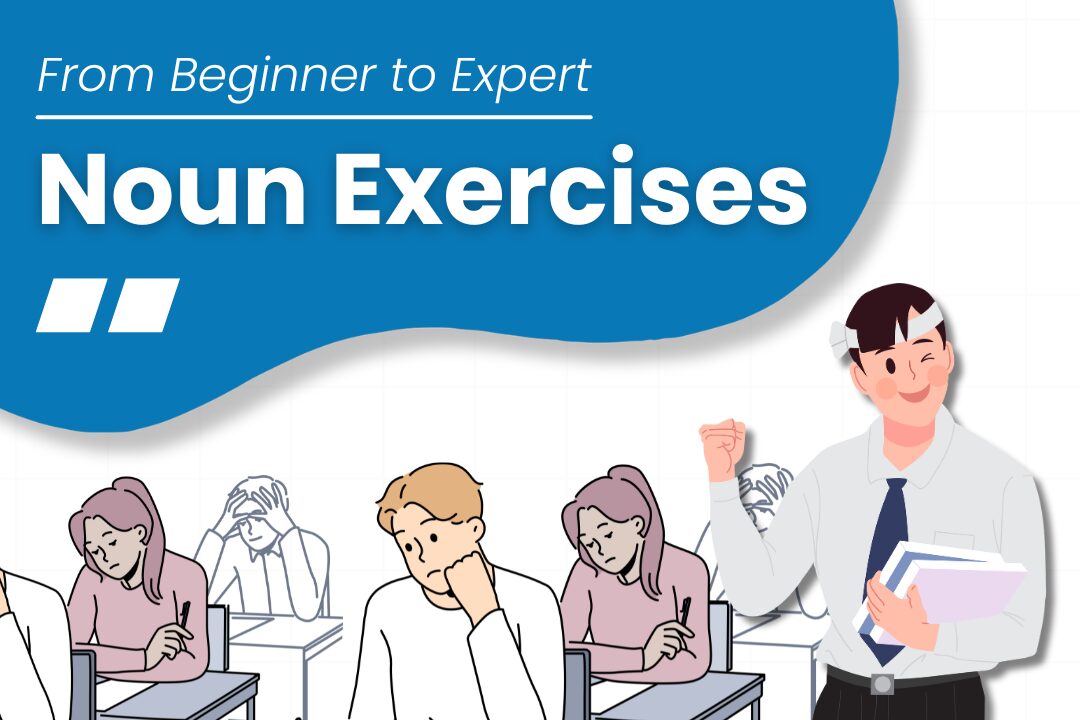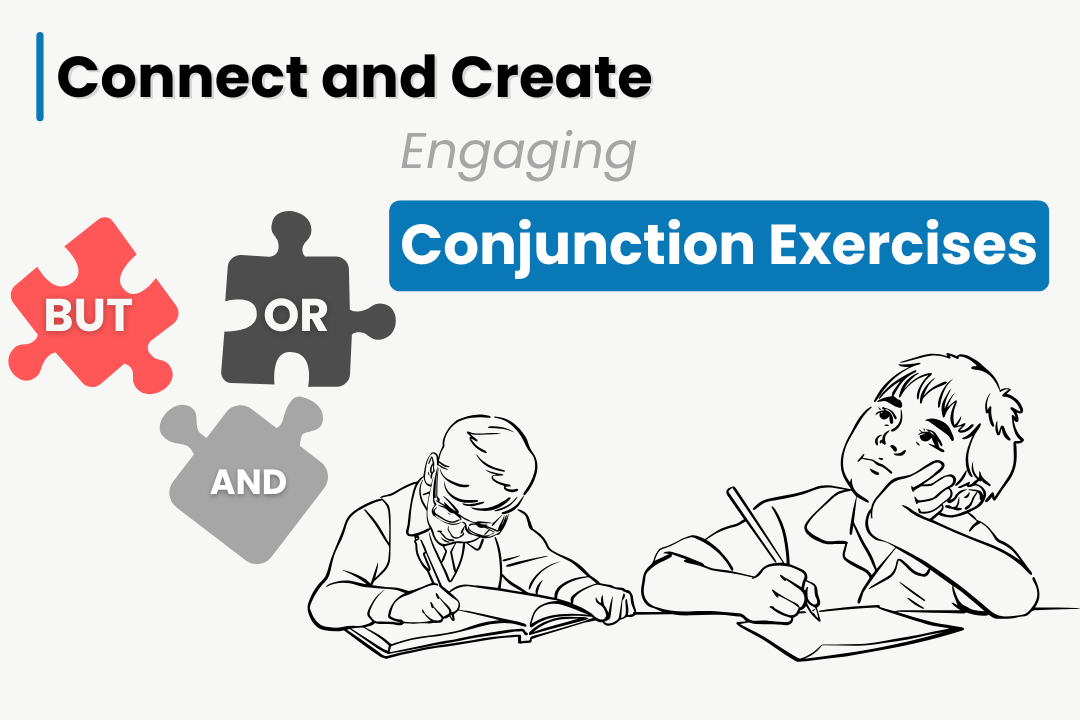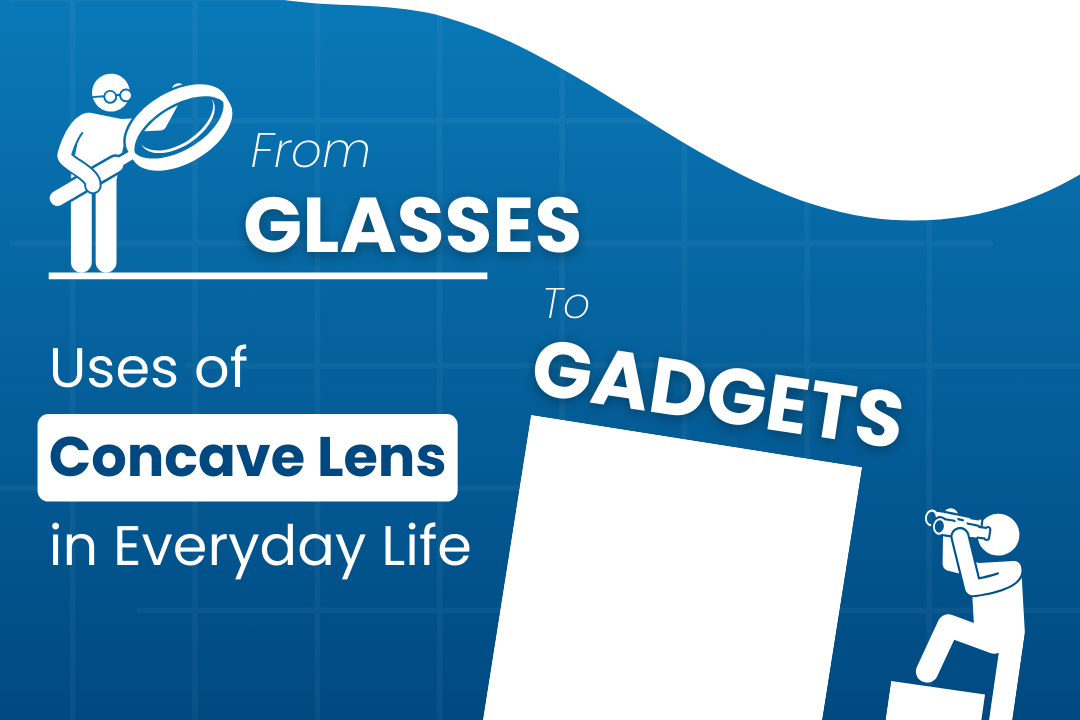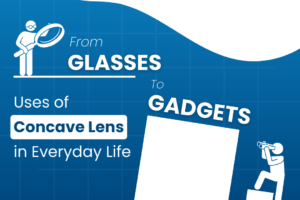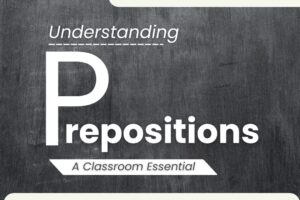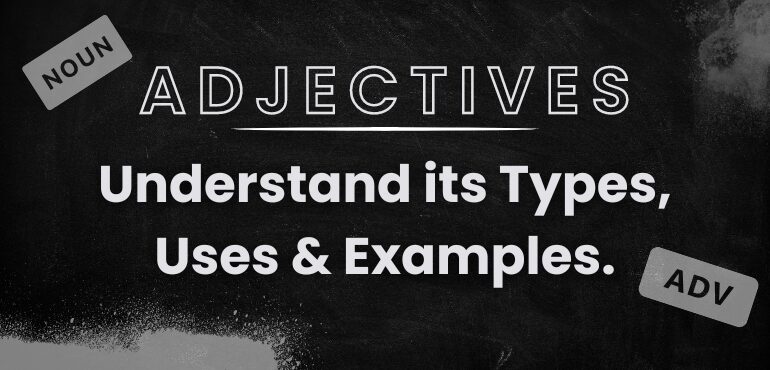
A word that describes the quality or quantity of a noun or pronoun is known as an adjective. Adjectives can either be used independently to provide details or comparatively to highlight relative qualities. In this blog, let’s dive deep into different types of adjectives along with examples and their importance in the parts of speech to make conversations in the English language more exciting.
Types of Adjectives
While adjectives primarily describe nouns and pronouns, they can be further categorized into different types based on their specific functions and purposes in a sentence as follows.
Descriptive Adjectives
Descriptive adjectives are words that describe or modify nouns by providing information about their qualities, such as size, color, shape, age, or texture. These adjectives help to create a vivid and detailed picture in the reader’s or listener’s mind. Descriptive adjectives are perhaps the most common type of adjectives and are essential for effective and engaging communication. Some of the examples of descriptive adjectives include large, red, round, young, smooth, cold, delicious, etc.
Possessive Adjectives
Possessive adjectives indicate ownership or possession. They are used to show that something belongs to someone or something. Words like “my,” “your,” “his,” “her,” “its,” “our,” and “their” are examples of possessive adjectives. For instance, “That is my book” uses “my” to show that the book belongs to the speaker.
Interrogative Adjectives
Interrogative adjectives are used to ask questions about nouns. They help inquire about the qualities, quantities, or types of something. Common interrogative adjectives include “which,” “what,” and “whose.” For example, “Which course do you prefer?” uses the interrogative adjective “which” to ask about a specific type of course.
Demonstrative Adjectives
Demonstrative adjectives are used to point out or identify specific nouns. They help indicate whether the noun being referred to is near or far from the speaker. Words like “this,” “that,” “these,” and “those” are demonstrative adjectives. For instance, “I like those shoes” uses “those” to identify and point out a particular pair of shoes.
Compound Adjectives
Compound adjectives are formed by combining two or more words to create a single adjective. These adjectives provide more descriptive power and can convey complex ideas about a noun. Examples of compound adjectives include “well-behaved,” “open-minded,” and “user-friendly.” For instance, “She is a well-behaved student” uses the compound adjective “well-behaved” to describe the student’s behavior more precisely.
Degrees of Comparison
Adjectives can be used to compare the qualities or characteristics of nouns. There are three degrees of comparison that allow us to express different levels of intensity or degree.
Positive Degree
The positive degree is the most basic form of the adjective. It is the base form of an adjective, used to describe a noun without comparing it to anything else. It simply states the quality or characteristic of the noun. Examples include “The Math section in SAT is tricky,” and “Studying Abroad is an exciting journey”.
Comparative Degree
The comparative degree is used to compare two nouns or objects, indicating which one has more or less of a particular quality. It is typically formed by adding “-er” to the adjective (for shorter words) or using “more” or “less” before the adjective. For example, “I feel cracking SAT is a little tougher than PTE.” uses the comparative “tougher” to convey that the SAT is difficult compared to the PTE for the speaker.
Superlative Degree
The superlative degree is used to describe the highest or lowest degree of quality of a noun. It is formed by adding “-est” to the adjective (for shorter words) or using “most” or “least” before the adjective. For instance, “Profile Building is the toughest part in study abroad preparation” uses the superlative “toughest” to indicate that- of all the processes involved in study abroad prep, profile building is the most challenging one. Using the appropriate degree of comparison allows us to accurately convey the extent or intensity of the qualities we are describing, making our communication more precise and effective.
Examples of Adjectives
Adjectives are used extensively in everyday language to describe people, objects, ideas, and more. Here are some examples that illustrate the use of different types of adjectives:
- Passionate students never find study abroad prep to be boring (Descriptive adjective)
- Math is my favorite subject. (Possessive adjective)
- Which book did you read? (Interrogative adjective)
- Those gifts were bought by my cousin while coming back from the US. (Demonstrative adjective)
- Technology-integrated learning solutions are the future of education. (Compound adjective)
- The laptop is usually more expensive than the tablet. (Comparative adjective)- Deciding to Study BTech in the USA is the smartest decision I made in my life. (Superlative adjective)
Conclusion
Adjectives are a vital part of speech in the English language, playing a crucial role in adding detail, description, and richness to our communication. By understanding the different types of adjectives, their degrees of comparison, and proper usage, we can express ourselves more precisely and effectively. Mastering adjectives is a valuable skill for anyone seeking to improve their written and spoken English.
FAQs
An adjective as a noun, or a nominalized adjective, occurs when an adjective functions as a noun. Examples include “the rich” (referring to wealthy people) and “the unknown” (referring to something not known).
A proper adjective is derived from a proper noun. It describes specific people, places, or things.
Example: “French cuisine” (where “French” is the proper adjective derived from the proper noun “France”).
Adjectives have three forms: positive, comparative, and superlative.
Positive: Describes a quality (e.g., “fast”).
Comparative: Compares two things, often ending in “-er” or using “more” (e.g., “faster”).
Superlative: Indicates the highest degree of quality, often ending in “-est” or using “most” (e.g., “fastest”).

